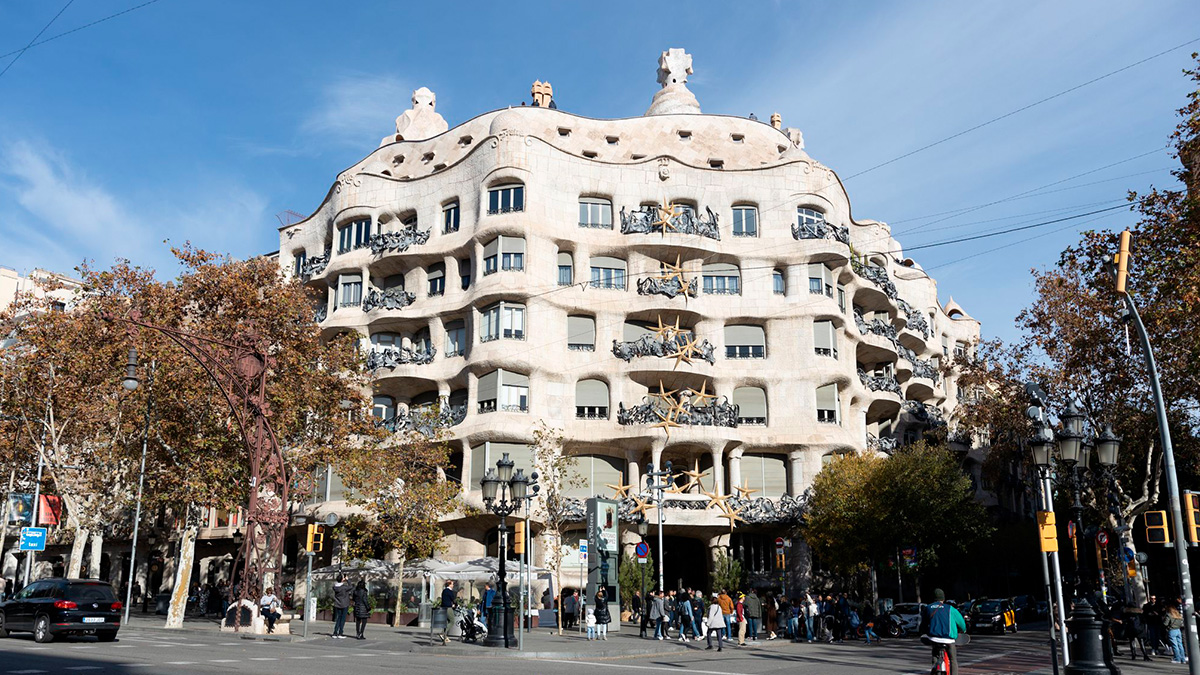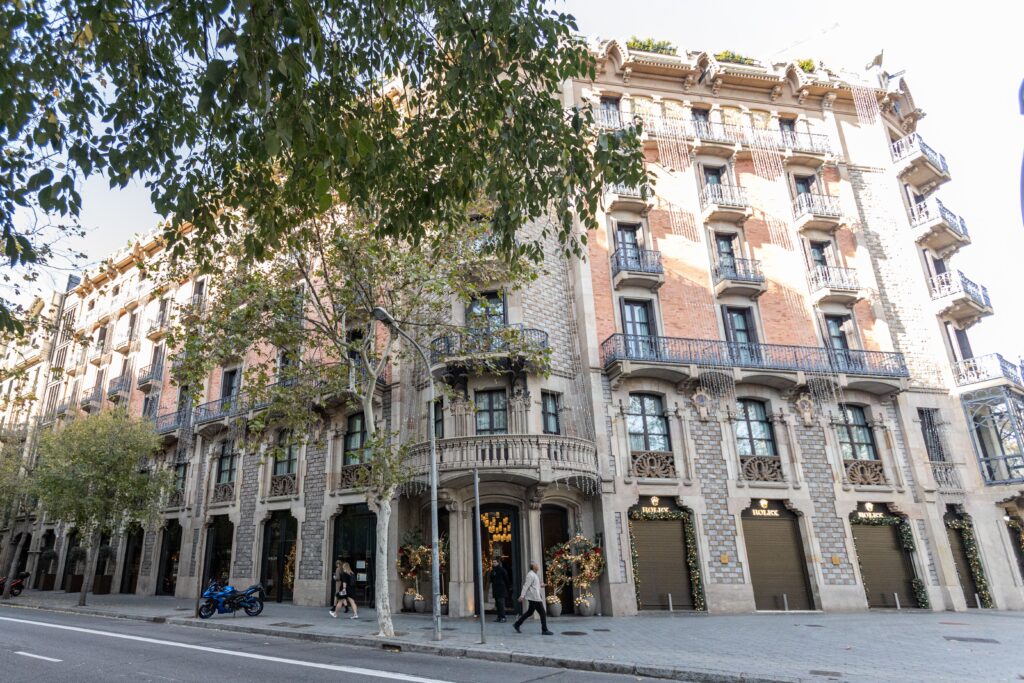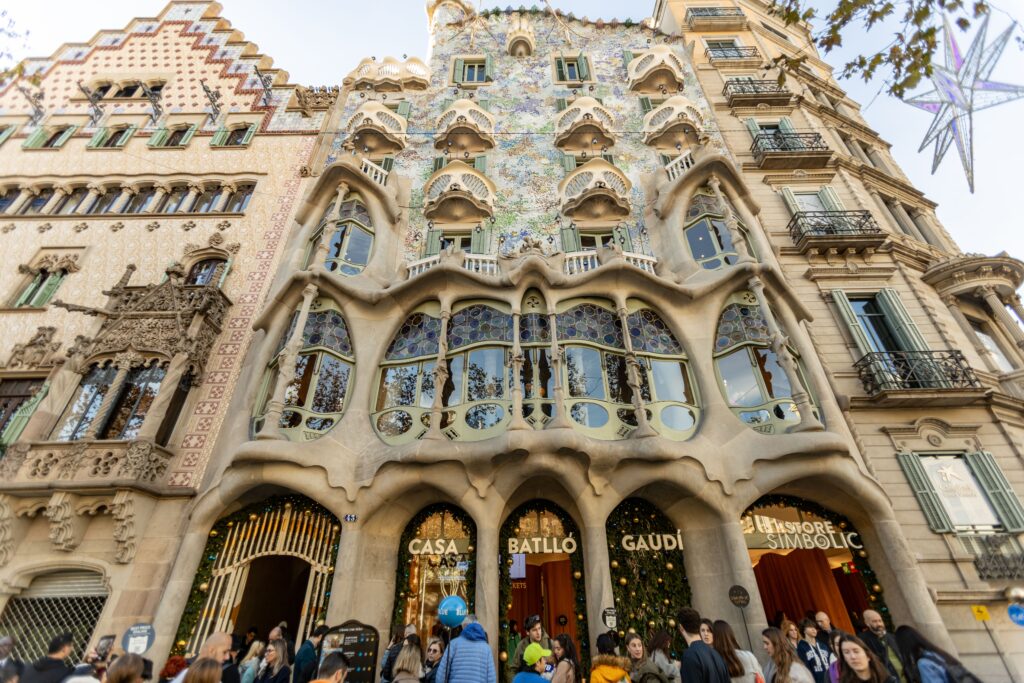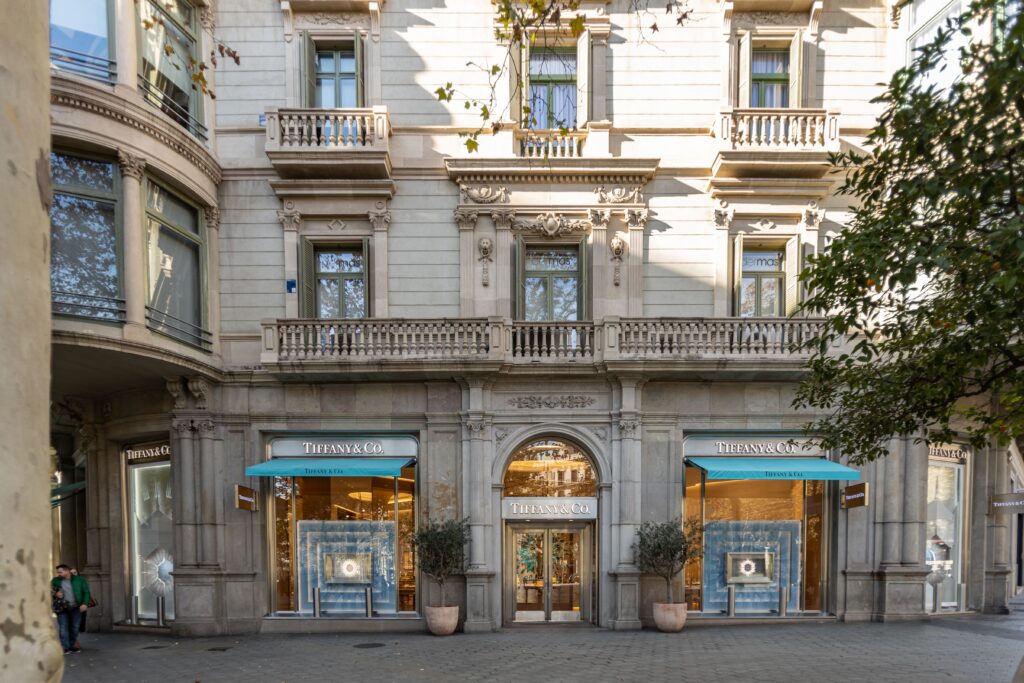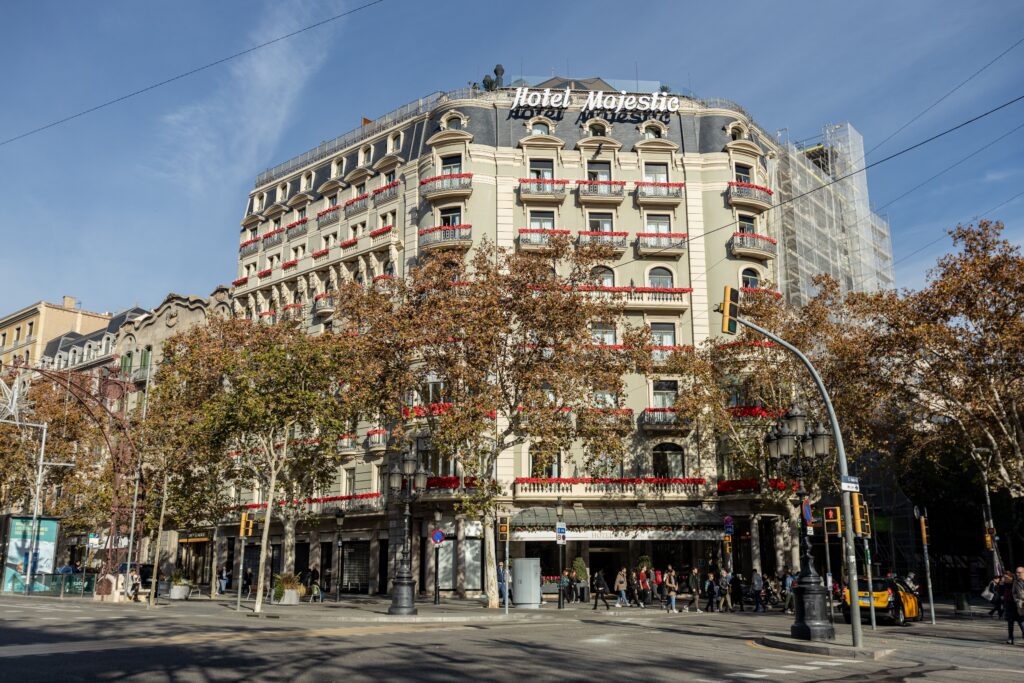Click here to read the Spanish version.
If you’re travelling to Barcelona, one of the must-see places to visit is Passeig de Gràcia. This elegant and cosmopolitan boulevard, 1.5 kilometres long (it starts at Plaça Catalunya and ends at Diagonal), has just turned 200 years old. Located in the heart of the city, it is known for its impressive modernist buildings and luxury shops, where the most exclusive fashion brands coexist with the national brands of the Inditex universe, Mango, or the historic local multi-brand Santa Eulalia, owned by Luis Sans, who is also president of the Association of the famous boulevard.
For this businessman, “Passeig de Gràcia is a quite unique street because, in addition to having the best commercial offer in the city, it concentrates the best gastronomy, luxury hotels and two World Heritage buildings”. In the opinion of Màrius Carol, former director of La Vanguardia and one of the city’s most authoritative voices, “Passeig de Gràcia is the Mediterranean version of the Champs Elysées, reflecting the sensible, balanced and bourgeois soul of Barcelona better than any other enclave. This Frenchified and ennobled boulevard is the city’s best shop window, half modernist museum, half commercial counter. Of the many Barcelonas that make up the Catalan capital, this is the most perfumed, luxurious and presumptuous. Without imposture, it tries to be the postcard that the stranger takes with him on his return home”.
An old country road is transformed into the most luxurious road in the city of Barcelona
But let us travel back in time. In 1823, the yellow fever epidemic of 1821, which killed thousands of Barcelona residents, had already passed. In this period of time, the old country road along the northern wall of Barcelona (known as the Jesus Road), where the upper classes of the city lived, was recovered and connected to what was then the municipality of the Villa de Gràcia, where the famous street stands today.
At that time, it was a quiet, bucolic place, surrounded by green spaces with a proliferation of gardens such as the Prado Catalán, the Criadero, the Ninfa and the Champs Elysées, the most notable of which had a large amusement park. Later, in a sign that this was going to have the Barcelona genotype, the road was regenerated by the engineer Ramón Plana, with the intention of making it a spacious road, in which the central artery was for pedestrians and the sides were for carriages. Over time, the first kiosks and cafés were set up and the terraces were filled by families from the wealthy classes to be seen and to represent the art of social prestige of the time: to greet and be greeted.
The big families settle in Passeig de Gràcia
The promenade was born as a leisure refuge for a thriving bourgeoisie that soon discovered its majesty, and from the 1930s onwards they began to settle there, fleeing from what had been the walled Barcelona, where they could no longer fit in. But it was not until the beginning of the 20th century that the famous thoroughfare, designed by the town planner Ildefons Cerdà, became one of the axes of Barcelona’s Eixample district and the greatest showcase of Catalan Modernisme, becoming the favourite street of the great bourgeois and aristocratic families.
The most sought-after architects of the time, such as Antoni Gaudí, Lluís Domènech i Montaner, Enric Sagnier, Josep Puig i Cadafalch and Pere Falques i Urpí, author of the iconic lampposts and benches, were the architects of the works of Catalan Modernisme, They competed to build the most sumptuous palaces and houses in the city, turning this avenue into one of the most opulent and unique corners of Barcelona and Spain, and one of the most coveted locations for international investment funds.
The most expensive shopping street in Spain
In this regard, the global report “Main Streets Across the World” by the real estate consultancy Cushman & Wakefield, which analyses the rents of the main shopping streets in 92 cities around the world, indicates that the Barcelona boulevard has the highest rental rents in Spain (on average, 3,000 euros per square metre per year) and is 17th in the world ranking. It also generates 27% of the tax-free sales made in the whole country.
A recent example is the sale of one of the most stately mansions on Passeig de Gràcia for 13.8 million euros: a 700 m2 property built at the beginning of the 20th century by the famous architect Joaquín Codina y Matalí.
The jewels in the architectural crown
One of the main attractions that every tourist can admire when visiting Passeig de Gràcia is its magnificent cultural and architectural legacy. Along this boulevard, which is just over a kilometre and a half long, we can find buildings that, due to their originality, beauty and history, form part of the city’s cultural heritage. Among them are two buildings listed by UNESCO as World Heritage Sites, the work of the same architect, Antonio Gaudí. We are talking about Casa Batlló and Casa Milà (better known as La Pedrera). Both receive around one million visitors every year.
The Casa Batlló embodies all of Gaudí’s originality and creativity. Built between 1904 and 1906, it is undoubtedly notable for the trencadis technique, which decorates part of the façade and the interior of the building, and whose installation Gaudí himself directed from the promenade. The interior courtyard, where blue colours decorate the walls, and the skylight at the top give the impression of being in an underwater cave.
Casa Milà was built between 1906 and 1910. Like Casa Batlló, “La Pedrera” belongs to Gaudí’s naturalist period, which is reflected in its undulating forms, which broke with the classic architectural rigidity of the time. In addition to the spectacular ornamentation that decorates the house, where stone and trencadis play a special role, there is also the religious symbolism provided by the architect who, in his own words, “was the architect of the house”.
Presence of major international brands
Presence of the major international brands These qualities were captured by the distinguished professor of the University of Berkeley (California), Allan Jacobes in his book, Great Streets (1995) on the best streets in the world. It is on this golden commercial axis that some of the world’s most prestigious brands have planted their flags, such as Loewe, with its iconic façade of floral-coloured tiles. A few steps up, the majesty of shops such as Louis Vuitton, which along with Hermès and Cartier have expanded their spaces in recent years.
They are joined by brands such as Yves Saint Laurent, Gucci, Versace, Valentino, Emporio Armani, Dolce & Gabana, Furla, Chanel, Prada, Celine and Carolina Herrera, as well as other important international jewellery brands such as Cartier, Bulgari, Tiffany’s, and national brands such as Tous, Suárez and Rabat. All of them attract the public’s attention with their impeccably designed shop windows. “There is currently a lot of unsatisfied demand from brands that want to come in, but the space is what it is,” says a spokesperson for the real estate company Cushman & Wakefield.
A wide range of gastronomic and hotel offerings
The well-known street that overflows with energy and life is also home to a wide range of hotels and restaurants, with bars and restaurants suitable for different economic levels where you can have lunch, dinner or just a drink in a stately and cosmopolitan atmosphere, such as the Café de la Pedrera. But if your wallet allows it, you can go to one of its Michelin restaurants. Seven stars are concentrated here.
The first to boast three Michelin stars is Lasarte, in the Monument Hotel. At the head of its kitchen is Martín Berasategui and Paolo Casagrande. In the same hotel, Oria, with one Michelin star, is also run by the Basque chef and his disciple, Xabier Goikoetxea. Across the street, we find the Hotel Mandarin Oriental, whose two-Michelin-starred restaurant Moments is headed by Carmen Ruscalleda and her son Raül Balam. At the top of Passeig de Gràcia is the Hotel Casa Fuster. On the first floor is its restaurant Aleia, one Michelin star. Its four-handed cuisine has the stamp of chef Paulo Airaudo and Rafa de Bedoya.
In a privileged location on the promenade is the Majestic Hotel & Spa. This establishment, which opened in 1918, was the city’s first five-star hotel and has been a privileged witness to the transformation of this iconic avenue. Over the years it has been a reference point for the Catalan bourgeoisie in search of luxury and refinement. Its restaurant Drolma, the first to be awarded a Michelin star in a hotel in Spain, is advised by Michelin chef Nandu Jubany.

